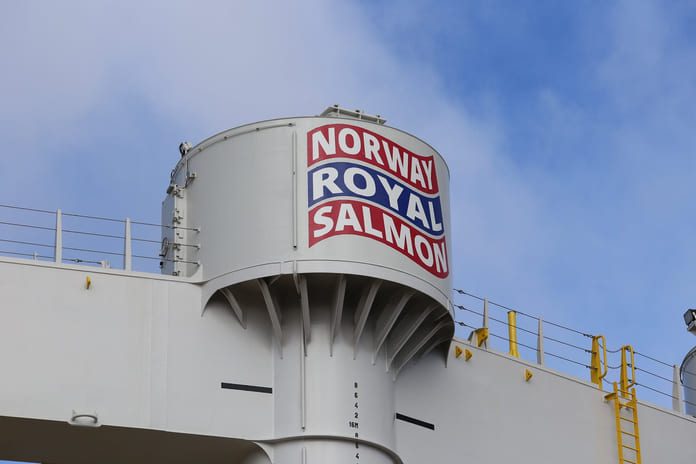NRS Q2 figures reflect high production costs due to harvesting from ISA sites. But demand for salmon is now increasing as the markets start to recover after the easing of covid restrictions.
On Monday, Norway Royal Salmon (NRS) released its results for the second quarter of 2021. The company recorded an operational EBIT of NOK 94 million (€8.9 million) for the quarter and an EBIT per kg of NOK 11.74 (€1.1). The corresponding figures for the same quarter last year were NOK 120 million (€11.3 million) and NOK 17.06 (€1.6).
Harvested volume was 9,703 tonnes, representing a 23 per cent increase year on year. Meanwhile, the company’s Icelandic operations saw a growth of 126 per cent.
Despite payment of dividend and large payments for the growth investments in Arctic Offshore Farming and the new smolt facility, the net interest-bearing debt decreased in the second quarter by NOK 69 million (€6.5 million) to NOK 1,955 million (€185.6 million). The equity increased by NOK 221 million (€20.9 million) to NOK 4,319 million (€410 million), which equates an equity ratio of 55 per cent.
At the end of the second quarter, NRS has a solid financial position with NOK 1,633 million (€155 million) in unutilised credit facilities and NOK 118 million (€11.2 million) in bank deposits. Net operational cash inflow in the quarter was NOK 239 million (€22.6 million).
For 2021, the total harvest volume of the group is expected to be 48,000 tonnes, of which 36,000 tonnes in Norway and 12,000 tonnes in Iceland. This is an increase of 18 per cent for Norway and 61 per cent for Iceland compared to 2020.
On 16 July, NTS made a mandatory offer for all shares in NRS at NOK 209 per share. Afterwards, the board of NRS announced that a strategic process had been initiated. Subsequently, NTS increased its offer to NOK 240 per share with an acceptance deadline of 26 August.
“During the second quarter, we have had a successful start-up of the smolt facility in Dåfjord and good progress on the Arctic Offshore Farming development project. Together with the company’s activity in Iceland, these two projects are important for the group’s ambition for volume growth. The smolt facility will in the long run ensure the supply of smolts and reduce production costs. Arctic Offshore Farming is expected to be launched into the to sea in the third quarter of 2021. Regarding the second quarter results, we are not satisfied with the production cost in the quarter, but we expect reduced costs in the third quarter,” said CEO Charles Høstlund.
“The demand for salmon is increasing and a reduction in the global harvest volumes is expected for the rest of the year. This provides the basis for a positive market view for salmon,” continued Høstlund.


